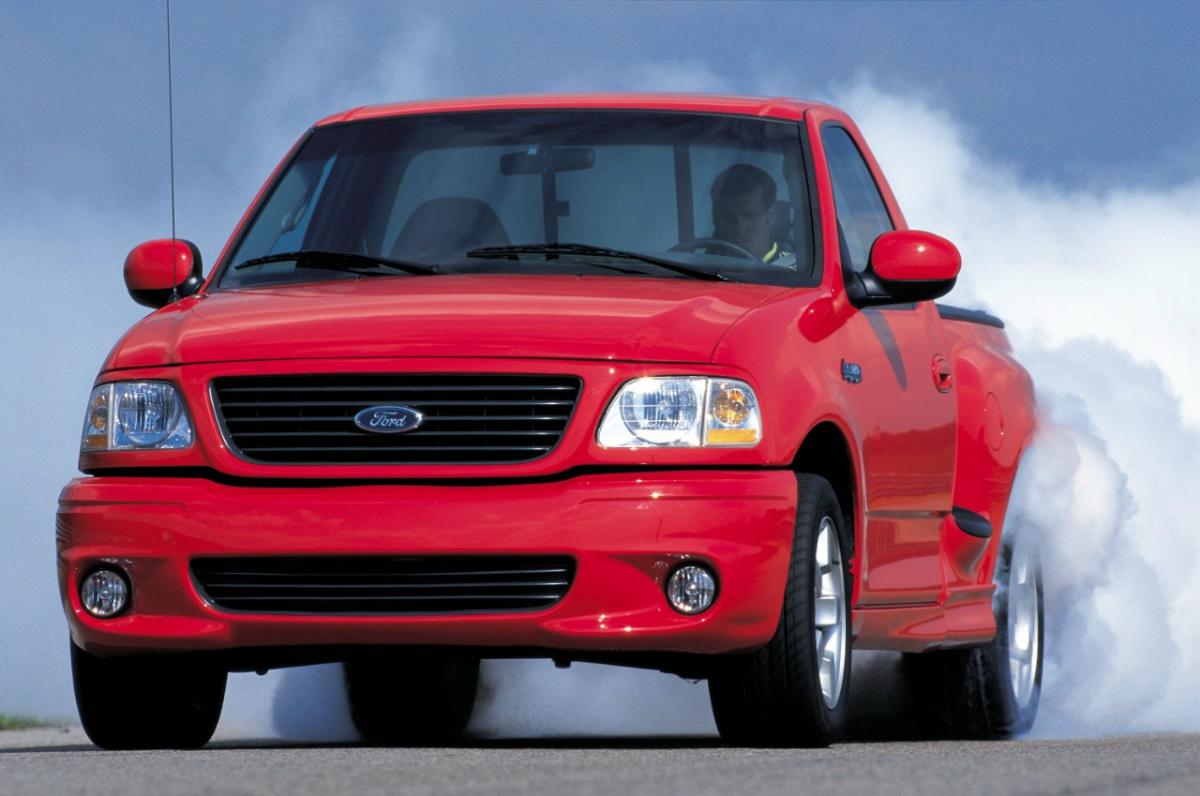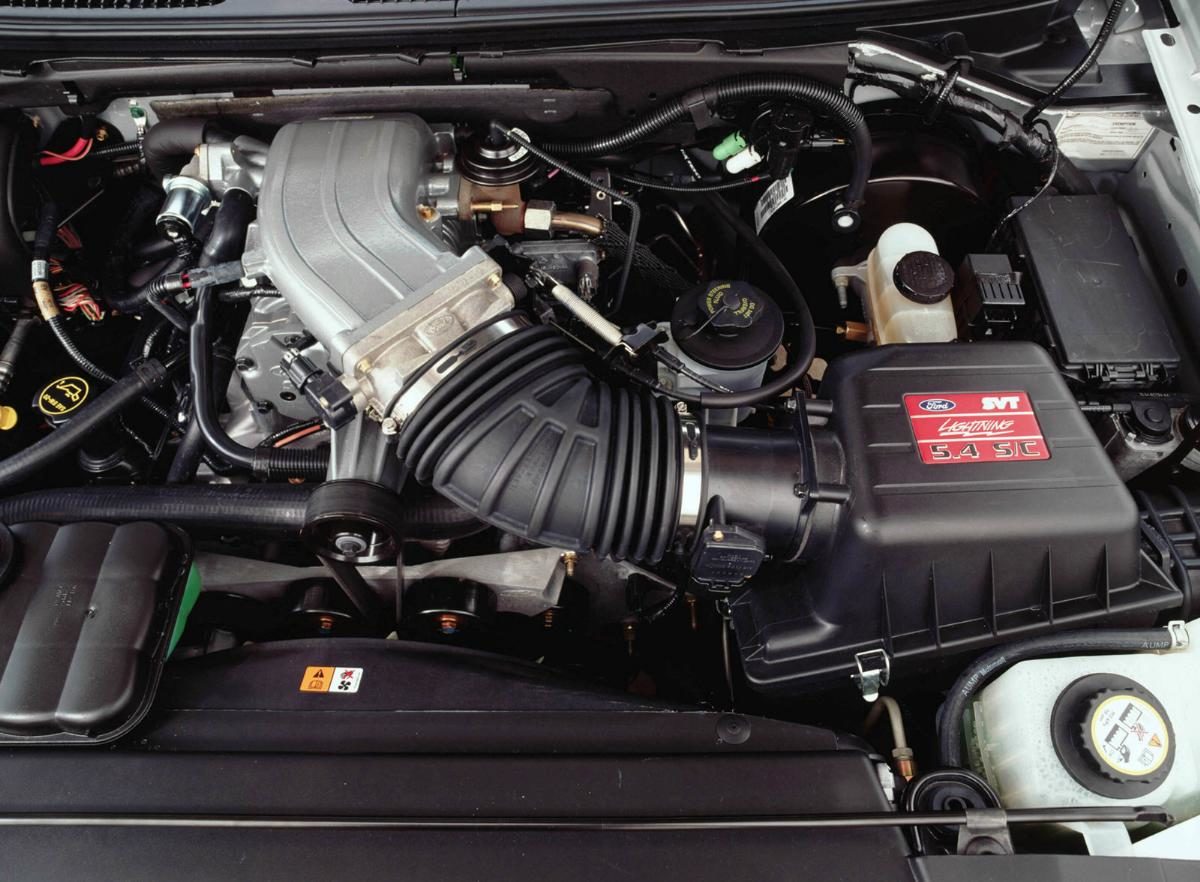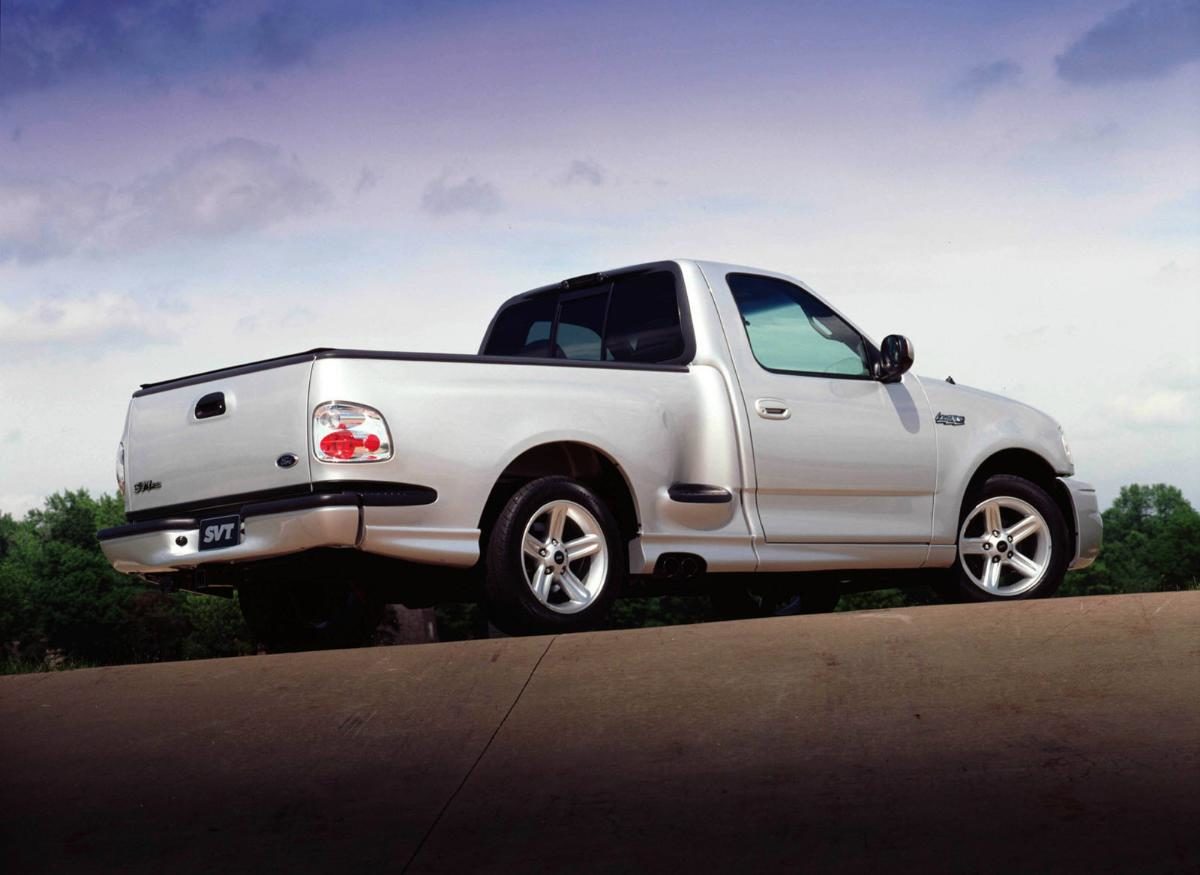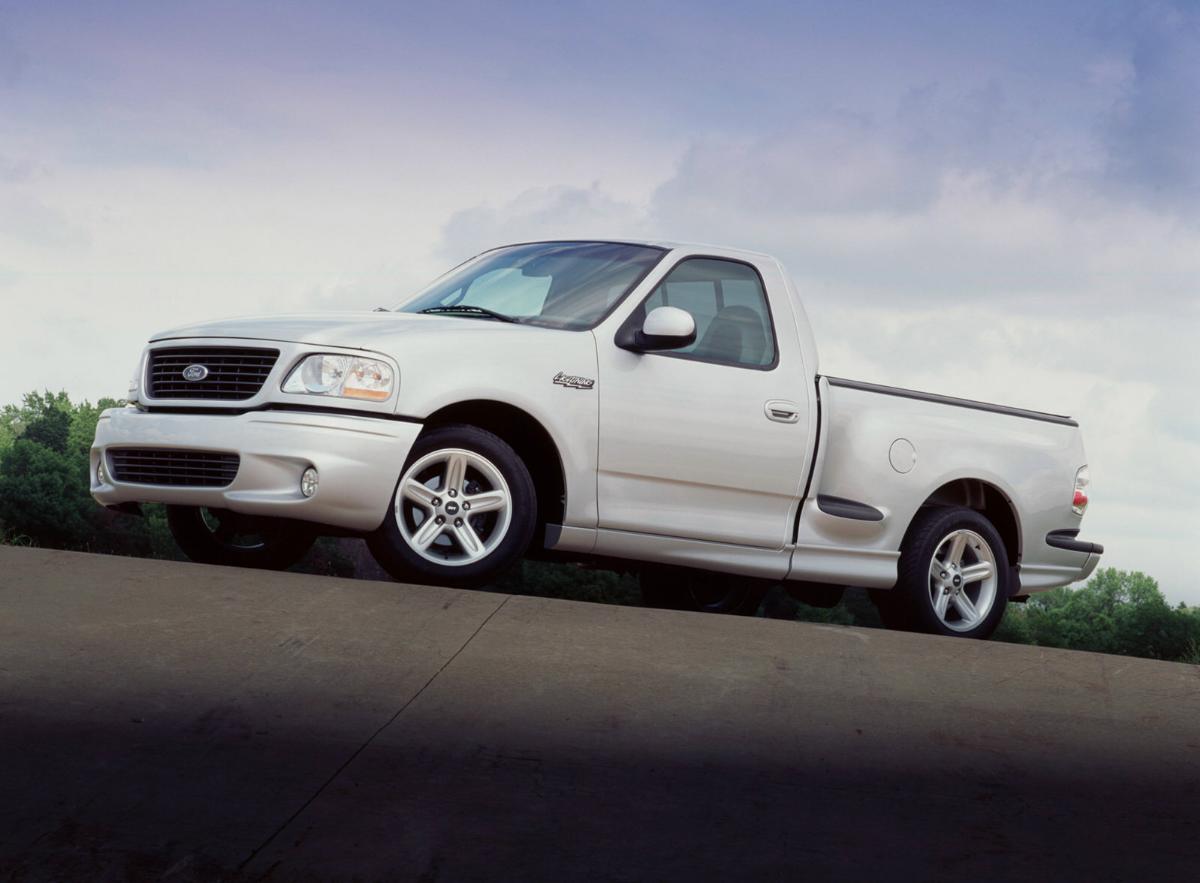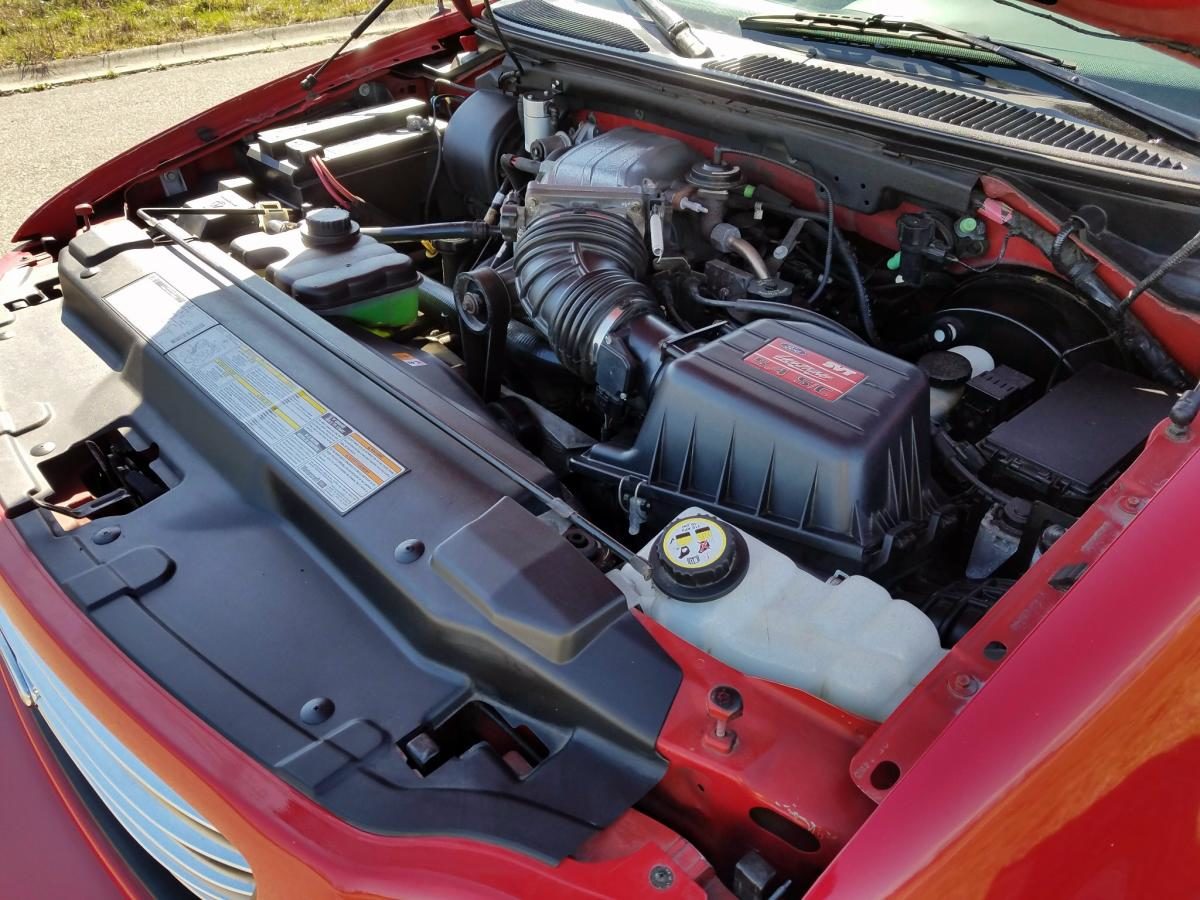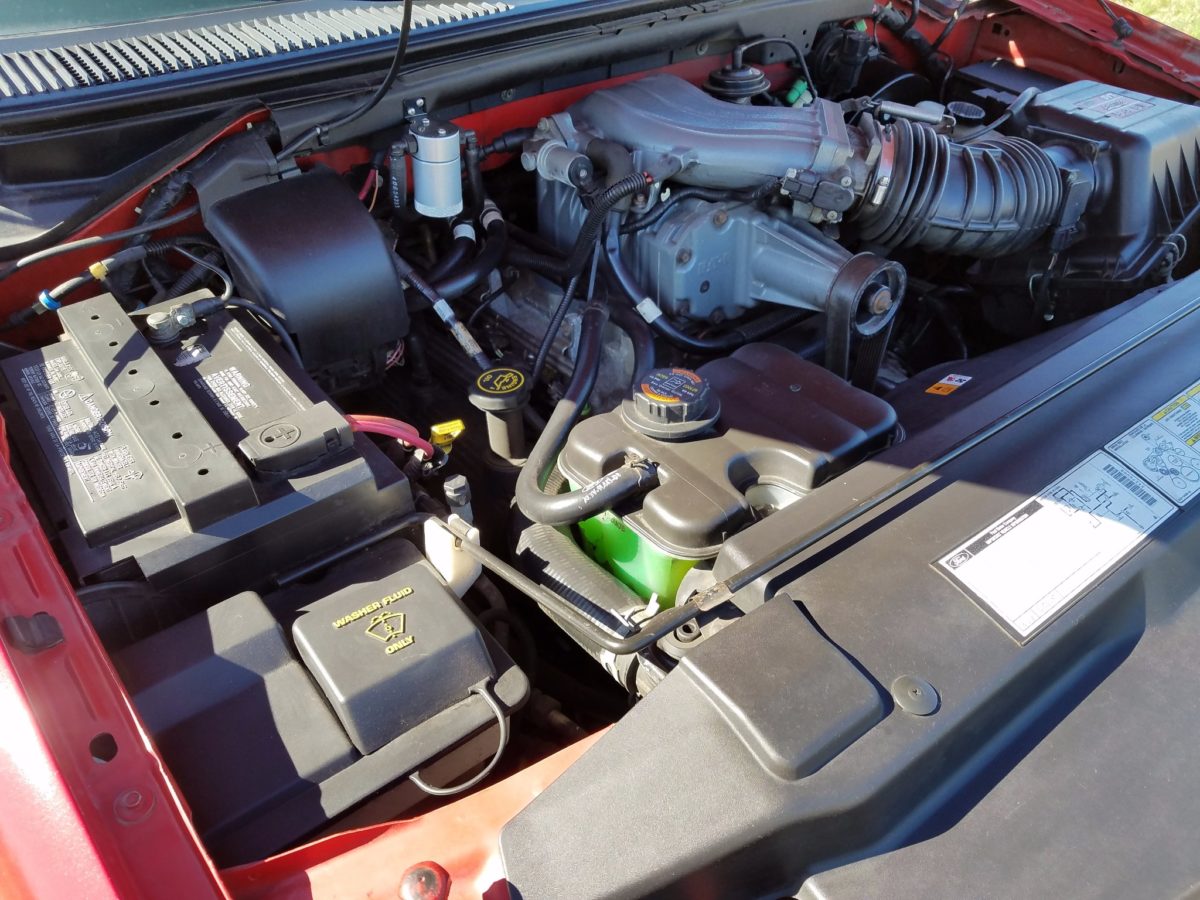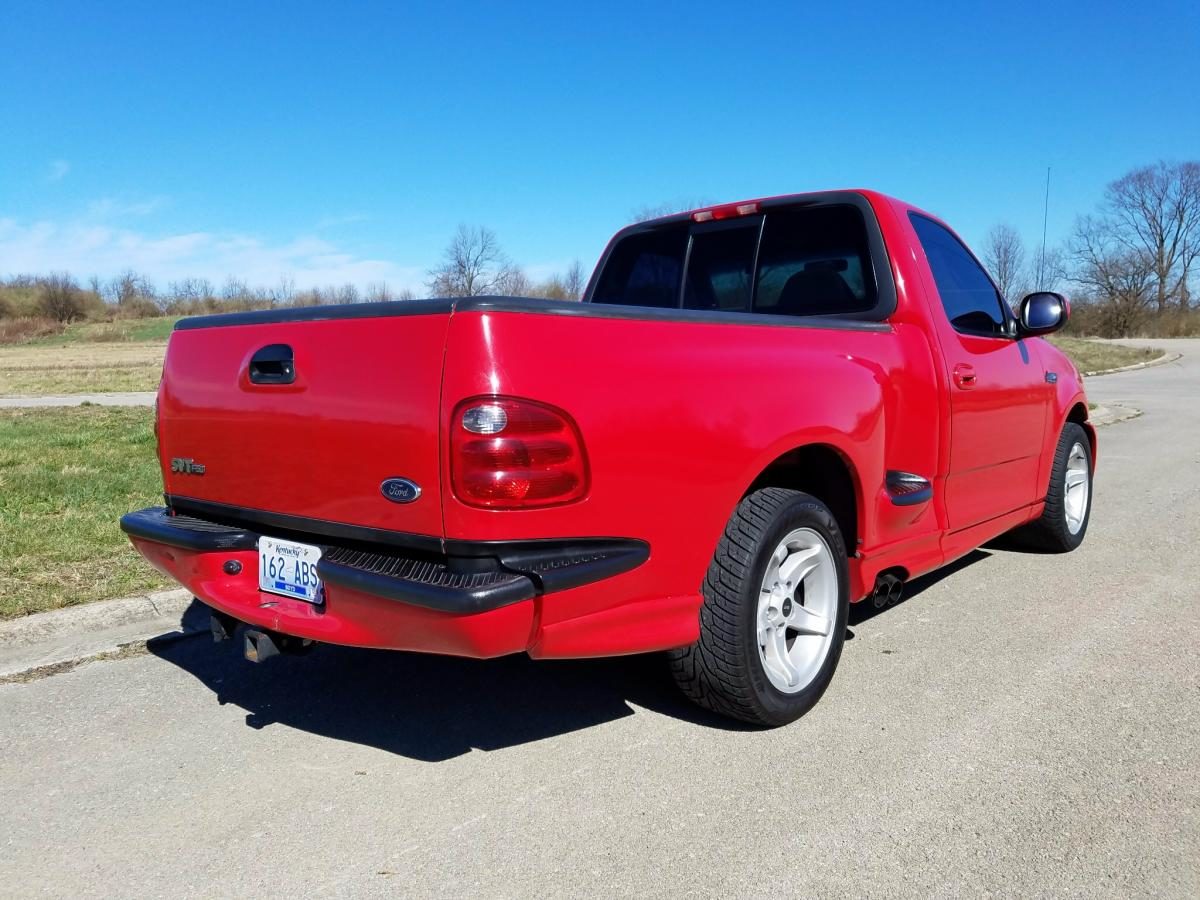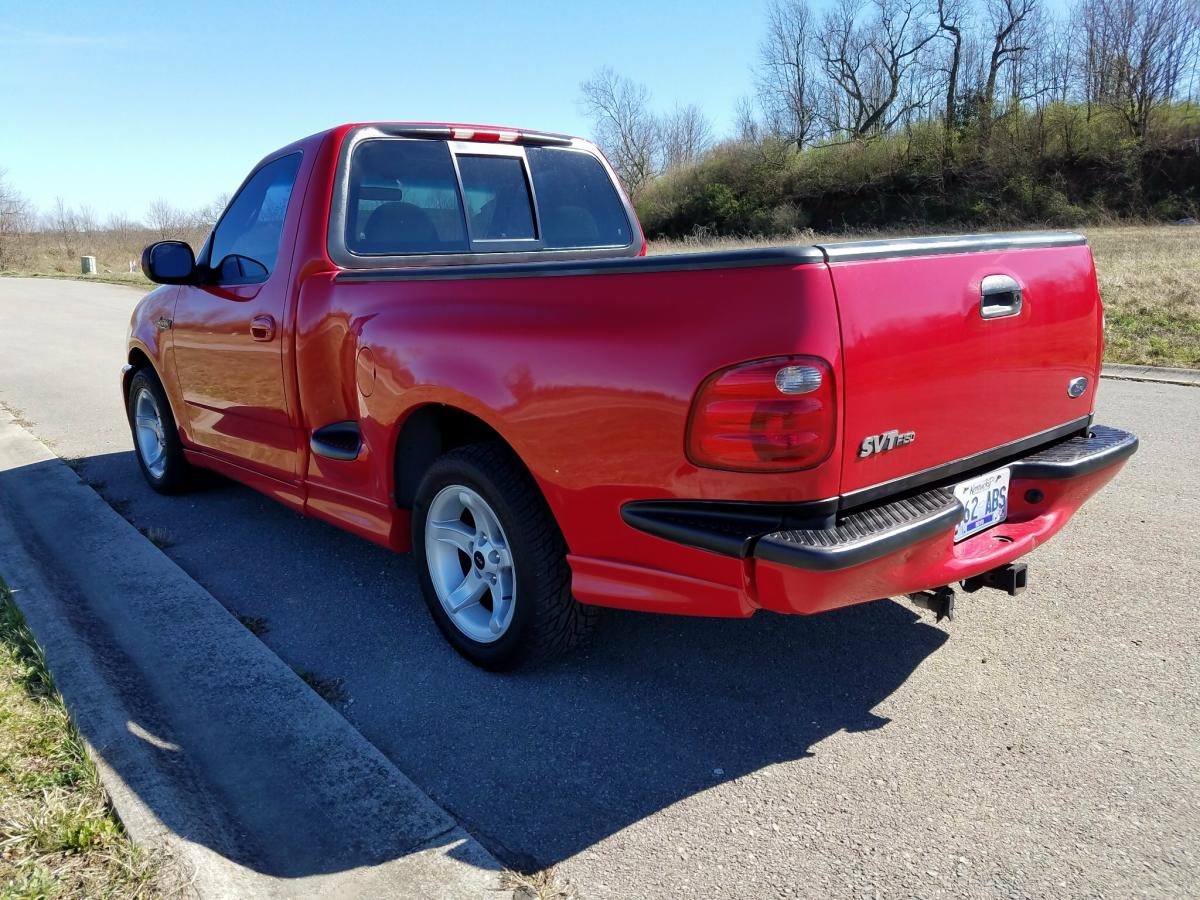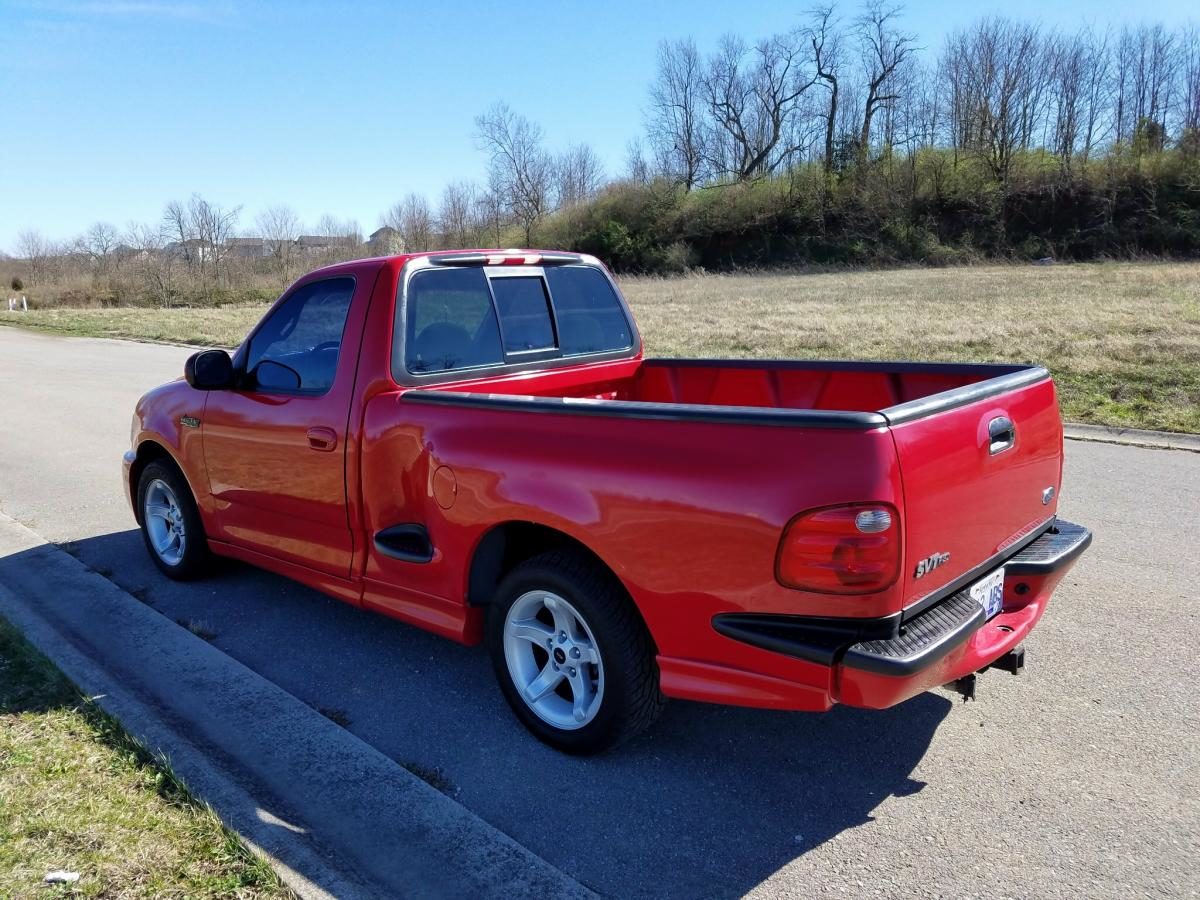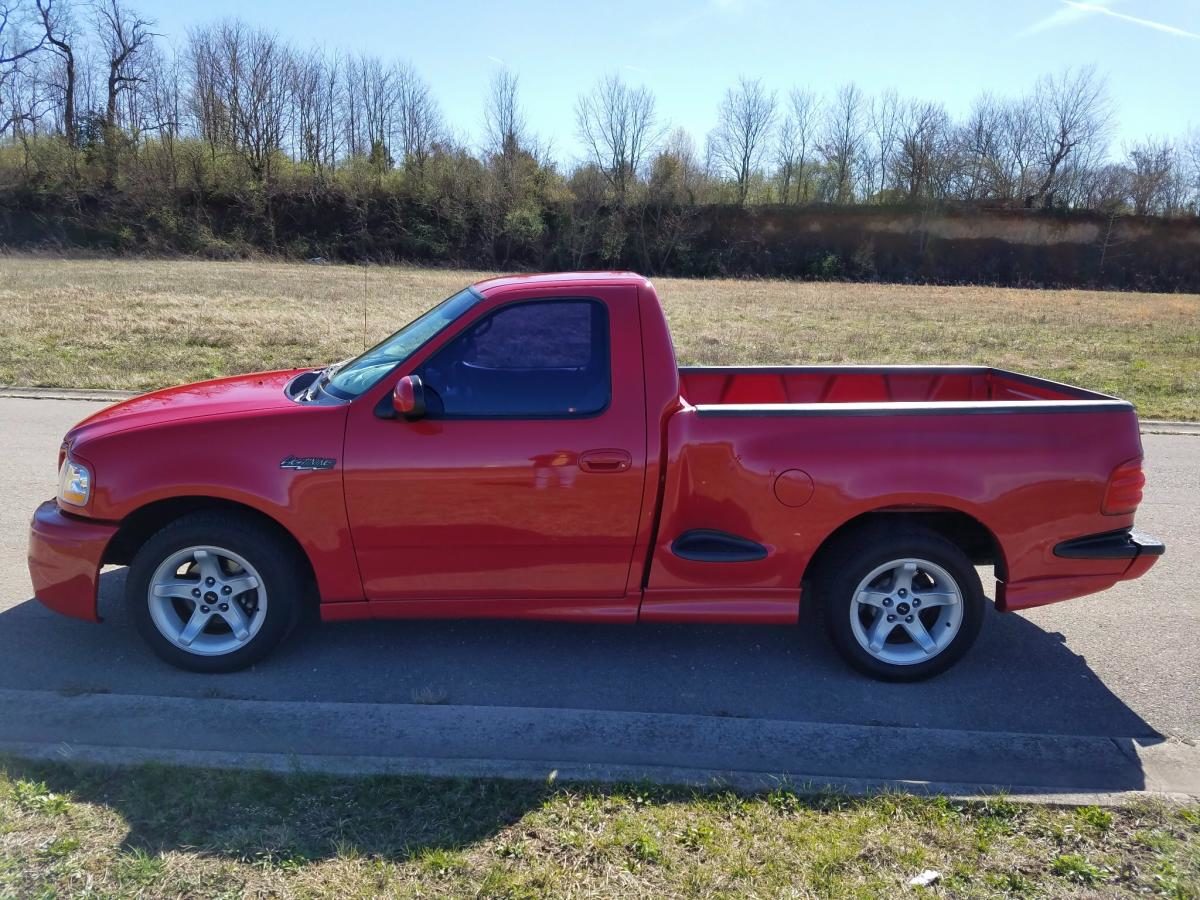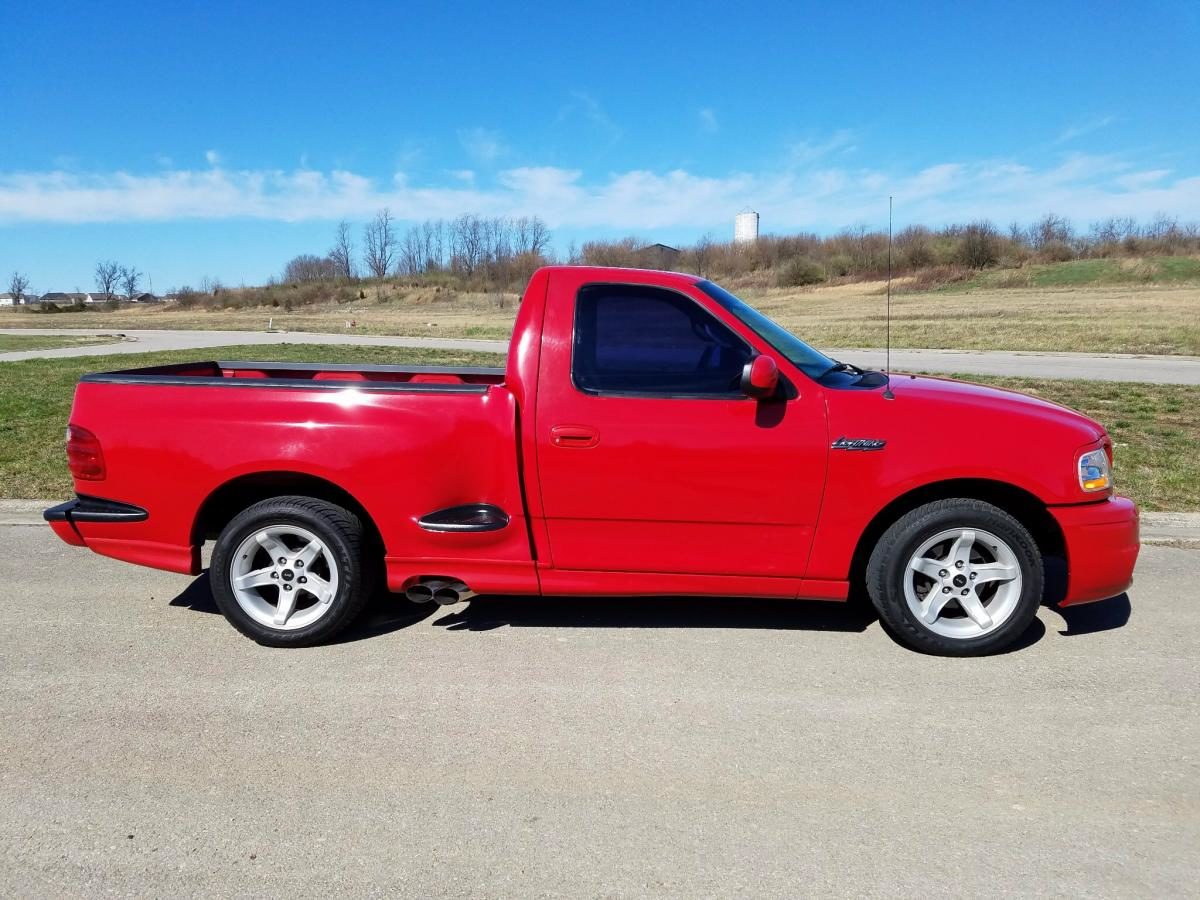2000 FORD SVT F-150 Lightning Supercharged Triton 5.4LV-8
With any SVT product, the powertrain is the heart of the vehicle. The goal for the Lightning was to create an engine that retains the efficient packaging dimensions of a V-8 while producing enough horsepower and torque to generate impressive acceleration.
Beginning with the Ford single overhead cam 5.4-liter Ford TritonTM V-8, SVT powertrain engineers combined solid durability with thrilling performance to create a ground-chewing V-8 that satisfies the performance desires — as well as the practical needs — of a driving enthusiast.
The cast iron engine block has a deep skirt, which means the lower edge of the block extends below the crankshaft’s centerline. This provides the engine’s bottom end great rigidity. Up top are aluminum-alloy heads that feature chain-driven single overhead cams, roller-finger followers with hydraulic lash adjustment, and beehive-shaped valve springs.
Spinning inside the block is a steel crankshaft forged in America by Krupp Gerlach Company. Employing the same advanced methods used to create the steel cranks of the SVT Mustang Cobra and SVT Contour, this forged piece was a necessary component in the creation of such a potent engine. Six crankshaft counterweights contribute to the engine’s smooth revving characteristics from idle to redline.
Lightning’s connecting rods are sinter-forged alloy, featuring the most robust “big ends” found in any Ford modular V-8. Made from powdered metal that is compacted into the rough shape of a connecting rod and then hot-struck in a forge, these connecting rods are remarkably strong, thanks to the millions of bonds created on the molecular level during the forging process.
After forging, the big ends are mechanically fracture-split to separate the bearing caps. Due to the irregular, interlocking surfaces that result along the fracture line, a bearing cap and the rod with which it was forged can be reassembled only one way, ensuring a perfect fit and an especially strong bearing cap assembly.
The specially designed forged pistons feature dished tops to lower the compression ratio to 8.4:1, and they are stout enough to handle the added combustion pressure generated by supercharging. A friction-reducing coating on the pistons’ sliding surfaces allows the engine to gather revs more quickly and also reduces wear on the piston and bore surfaces.
Perhaps the most significant component in the creation of power and torque is the Eaton Gen-IV supercharger sitting atop the intake system. This Roots-type supercharger has a cast aluminum case, machined aluminum internal rotors, and its own dedicated drive belt. The supercharger, and the water-to-air intercooler sitting directly below it in the vee, are the components most responsible for the phenomenal horsepower and torque figures of the SVT Lightning.
Despite its unique power and torque, the Lightning engine is closely related to all other Ford 5.4-liter truck engines. The only major components in this powerplant that have been specially developed for the SVT Lightning are the supercharger, intercooler, intake tract, crank and forged pistons. The other elements in the basic architecture of this engine can be found in the TritonTM V-8 that powers hundreds of thousands of new Ford F-series trucks sold each year — amazing testimony to the robust and intrinsically good design of the Ford modular V-8 family.
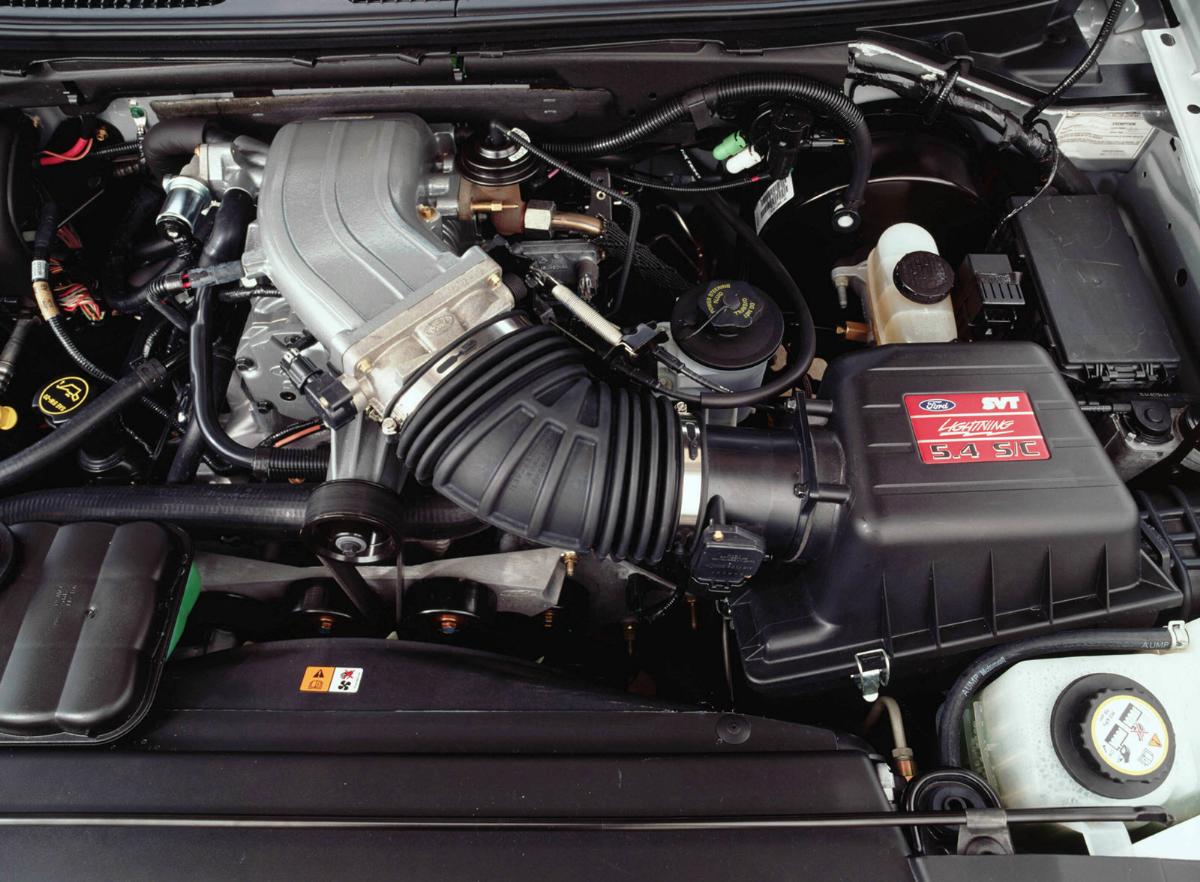
SVT powertrain engineers drastically improved the intake breathing not only through pressure-charging, but also by producing an efficient upper intake design. The result is an engine that delivers phenomenal horsepower and torque figures.
The process begins with a special large-capacity air cleaner and air intake. Just ahead of the supercharger is a dual-bore 57mm throttle body much like that used in the SVT Mustang Cobra. Its butterfly valves open simultaneously, not in stages, giving the engine exceptional throttle response by rapidly delivering large volumes of air through an 80mm mass-air sensor to the supercharger. The supercharger compresses the air to 8.0 psi before it enters the water-to-air intercooler, where the air is cooled to create a denser and thus more powerful charge.
The fuel-air mixture is then delivered directly downstream to the 44.5mm intake valves, which swirl the mixture into the eight combustion chambers. Cast iron tuned exhaust manifolds feed spent gases to a dual exhaust system, which exits to the right side of the truck ahead of the right rear wheel. Twin 3.0-inch ceramic-coated tips with rounded ends provide a visual accent for the system.
Keeping this powerful engine cool under both high-performance and towing conditions are a Ford Super Engine Cooling package and an engine oil cooler. Each helps the engine maintain normal-range coolant and engine-oil temperatures under the most strenuous work and performance conditions.
Complementing the exceptional power and torque of the blown SVT Lightning V-8 is a specially developed four-speed automatic transmission that employs numerous internal components first developed for the commercial transmission that mates to the Ford Power Stroke™ diesel engine.
This specially developed transmission provides the durability needed for this torquey engine, yet the shift patterns remain both passenger-car smooth and sports-car positive. The throttle provides excellent control over downshifts.
An Auxiliary Transmission Cooler package that helps maintain the condition of the transmission fluid is standard equipment. The Lightning’s performance speaks for itself. The 440 lb-ft torque peak is reached at 3000 rpm, 360 horsepower arrives at 4750 rpm, and the redline occurs at 5250 rpm. Not surprisingly, the SVT Lightning delivers rapid acceleration: 60 mph arrives in 6.2 seconds, and the quarter-mile is a done in 14.6 seconds at 97 mph. Top speed is an ungoverned 140 mph.
And in what may be the classic American test of high-performance capability, the 0-100-0 mph dash, Lightning’s total elapsed time is a brief 22.5 seconds.
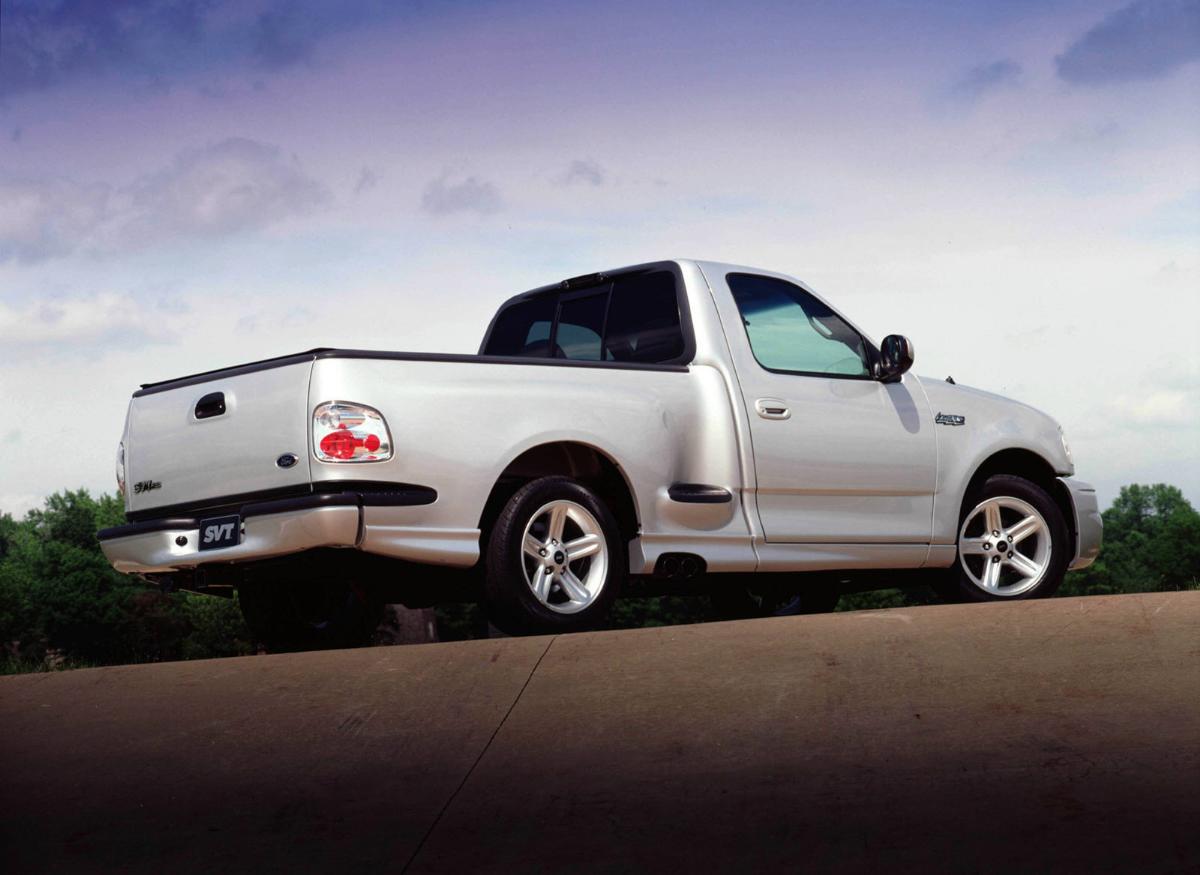
Specifications:
| Interior Dimensions (in.) | |
| Head room | |
| Front | 40.8 |
| Rear | N/A |
| Leg room | |
| Front | 40.9 |
| Rear | N/A |
| Shoulder room | |
| Front | 63.8 |
| Rear | N/A |
| Hip room | |
| Front | 61 |
| Rear | N/A |
| Capacities | |
| Cabin (cu.ft.) | 60.2 |
| Bed (cu. ft.) | 50.2 |
| Fuel tank (gal.) | 24.5 |
| Exterior Dimensions (in.) | |
| Wheelbase | 119.8 |
| Length | 208 |
| Width | 79.1 |
| Height | 70.9 |
| Tread | |
| Front | 65.3 |
| Rear | 65.3 |
| Brakes | Vacuum power-assisted 4-wheel disc brakes with 3-channel ABS |
| Disc diameter (in./mm) | |
| Front | 12.1/308 vented disc, twin piston caliper |
| Rear | 13.1/334 disc, single piston caliper |
| Suspension | |
| Front | Twin short- and long-arm type, coil springs, tubular gas-charged shock absorbers, 31mm solid stabilizer bar |
| Rear | Solid axle, staggered gas-charged shock absorbers, five-leaf springs, 23mm solid stabilizer bar |
| Steering | Recirculating ball, power assist |
| Overall ratio | 14.0:1 |
| Turns, lock-to-lock | 3.3 |
| Turning radius (ft.) | 44.3 |
| Wheels | Five-spoke cast aluminum-alloy, painted surface |
| Front: | 9.5″ x 18″ |
| Rear: | 9.5″ x 18″ |
| Tires | Goodyear Eagle F1-GS ZR |
| Front: | 295/45ZR 18 |
| Rear: | 295/45ZR 18 |
Photos:
These are photos of a used Lightning, so they may show a little wear. Click the photos to enlarge. Click the arrows to load more.

